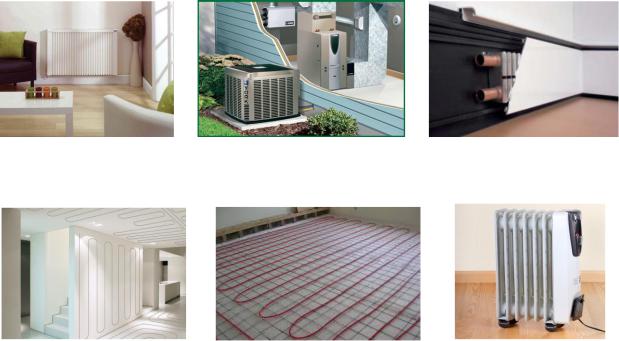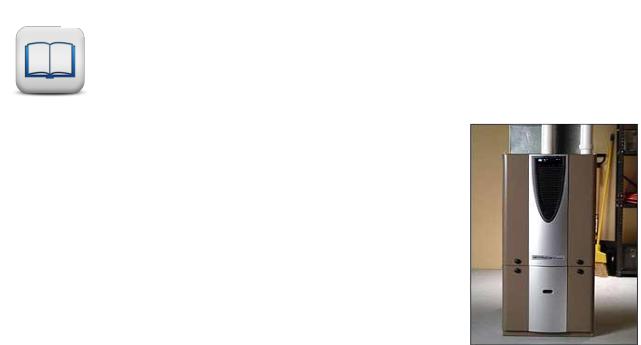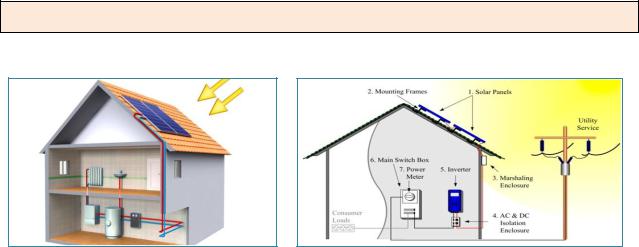
ПОСОБИЕ_English_for_Engineering
.PDF
7.Speaking. Discuss the following questions and make up a short report.
Why is it important to protect gas pipe line from corrosion?
Do you know any anti-corrosion methods of protection?
8.Place the words from the word bank under the correct headings.
vestibule |
office |
conference room |
|
entrance |
|
stairwell |
elevator |
Moving between levels |
Entering a building |
Working in a building |
|
|
|
|
|
|
|
|
|
|
|
|
Final Tasks
1. Translate the following sentences using the vocabulary of Unit 6.
1. Газоснабжение – это организованная подача и распределение газового топлива для нужд народного хозяйства. 2. Газ широко применяется в коммунальном хозяйстве для приготовления пищи, для технологических нужд предприятий, для нагревания воды, а также для отопления, вентиляции и кондиционирования воздуха жилых и общественных зданий. 3. При газоснабжении используются природные горючие газы, искусственные газы, сжиженные газы. 4. Крупнейшими потребителями природного газа являются предприятия машиностроения, черной и цветной металлургии,
теплоэлектростанции. 5. Газоснабжение городов и промышленных предприятий природными и искусственными газами осуществляется по магистральным
71

газопроводам, транспортирующим газ от мест его добычи или производства к потребителям. 6. Для газоснабжения малоэтажных жилых зданий и небольших коммунальных предприятий обычно применяют автономное газоснабжение. 7. Из-за недостаточного (low) снабжения газа, люди зимой могут остаться без тепла. 8. Добыча газа снизилась на 20% по сравнению с прошлым годом.
2. Speaking. Make up a dialogue on the following topic.
One of you is a customer. The other is a sales consultant specializing in what you are looking for. You‟re choosing a gas stove to your flat. Give a consultation on the item.
Discuss cost, maintenance, exploitation characteristics, advantages and disadvantages of various stoves.
3. Find all the words and give their translation.
c |
c |
h |
w |
e |
l |
d |
i |
n |
g |
|
|
|
|
|
|
|
|
|
|
o |
o |
e |
c |
o |
p |
p |
e |
r |
a |
|
|
|
|
|
|
|
|
|
|
r |
a |
a |
b |
s |
u |
p |
p |
l |
y |
|
|
|
|
|
|
|
|
|
|
r |
l |
t |
c |
c |
o |
o |
k |
e |
r |
|
|
|
|
|
|
|
|
|
|
o |
h |
e |
n |
g |
i |
n |
e |
e |
r |
|
|
|
|
|
|
|
|
|
|
d |
f |
d |
e |
o |
i |
l |
f |
p |
g |
|
|
|
|
|
|
|
|
|
|
e |
u |
i |
j |
k |
l |
m |
n |
i |
d |
|
|
|
|
|
|
|
|
|
|
o |
e |
p |
f |
l |
a |
m |
e |
p |
u |
|
|
|
|
|
|
|
|
|
|
q |
l |
s |
y |
s |
t |
e |
m |
e |
c |
|
|
|
|
|
|
|
|
|
|
r |
s |
e |
n |
e |
r |
g |
y |
t |
t |
|
|
|
|
|
|
|
|
|
|
1.__________ |
6.__________ |
11._________ |
2.__________ |
7.__________ |
12._________ |
3.__________ |
8.__________ |
13._________ |
4.__________ |
9.__________ |
14._________ |
5.__________ |
10._________ |
15._________ |
72

4.Project.
Speak of the history of the development of gas supply system and early gasworks.
How do recent gasification technologies differ from old gasification technologies?
5.Think of the situations where you can use the following idioms.
Add fuel to the fire, a ball of fire, baptism of fire, between two fires, be under fire, as black as coal, a burning question, burn one‟s boats, burn one‟s fingers, burn the candle at both ends, burn the midnight oil, burn up the road, catch fire, draw fire from smb., the fat is in the fire, fight fire with fire, fire in one‟s belly, fire one‟s last shot, fire the first shot, flash fire, get on like a house on fire, go down in flames, go through fire and water, hang fire, haul smb. over the coals, have many irons in the fire.
6. Read the sentence pairs. Choose which word or phrase best fits each blank.
1. position / prevailing wind
A The architect had to adjust the building‟s __________.
B A row of thick bushes can protect against the __________.
2. heat gain / shadow
A The tree casts a __________ over the parking lot.
B Thick insulation can improve a building‟s __________.
3. adjacent / existing
A The building that is __________ to this one is blocking the sunlight.
B An __________ structure is one that is already there.
73

Unit 7. HEATING
Text 7A
1. Before you start.
How can you define a heating system?
What types of heating systems do you know?
2.Read the words and learn them by heart. Make up your own sentences with them.
1.Climate-control – климат-контроль, регулирование состояния воздуха в помещении
2.Source – источник
3.Means – средство
4.To distribute – распределять
5.Heating system – отопительная система
6.Furnace – печь, котѐл
7.To power – приводить в действие или движение, обеспечить электроэнергией
8.Radiator – батарея отопления, обогреватель
9.Radiant – источник тепла
10.Skirting board – плинтус, панель
11.Hydronic heating – жидкостное отопление
12.Concrete – бетон
74

13.Driveway – подъездная дорога; подъездной путь
14.To accumulate – накапливать, аккумулировать
15.Portable – портативный, переносной
16.Freestanding – отдельно стоящий, самостоятельный, автономный
3. Read the text 7A, translate it and label the pictures with the expressions in
bold.
Types of Heating Systems
All climate-control devices or systems have three basic components: a source of warmed or cooled air, a means of distributing the air to the rooms being heated or cooled, and a control used to regulate the system (e.g. thermostat). A variety of technologies are available for heating your house:
In a central heating system a furnace or boiler consumes the fuel (e.g. gas, oil, or electricity) that powers it. As fuel is burned, pipes take hot water to radiators. You get hot water at the same time as heating, depending on how you set the controls.
Electric heat pumps remove heat from outdoor air, ground, surface water or the earth and move heat from one place to another. They can also be used as air conditioners when the weather is warm. The thermostat will also include controls for air conditioning.
Radiant skirting board heaters are long, metal units with electrical elements inside. They are sometimes the only source of heat in a house, or they can be an extra heating device in cooler rooms.
Radiant ceiling or floor systems are installed in floors, ceilings or (occasionally) walls. They warm objects in much the same way as the sun does.
In hydronic heating a boiler warms the circulating water and hot water flows through tubes under the floor or through units that are similar to skirting board heaters. They can also be installed in ceilings. They are sometimes used under concrete in driveways to keep snow and ice from accumulating.
Portable space heaters are either freestanding or attached to a wall and work with electricity, gas or kerosene. Their area cannot be qualified as heated living space.
(Source: Flash on English for Construction)
75

a. __________ |
b. __________ |
c. __________ |
||
|
|
|
|
|
|
|
|
|
|
d. __________ |
e. __________ |
f. __________ |
4.Answer the following questions.
1.How many and what components do all climate-control devices or systems have?
2.What variety of technologies available for heating your house can you point out?
3.Describe central heating system.
4.What device can also be used as air conditioner when the weather is warm?
5.How do radiant skirting board heaters look like?
6.Where can hydronic heating be used?
7.What are portable space heaters?
8.What heating system would you personally prefer to install in your house or flat and why?
5.Read the text again and complete the table. More than one answer is possible.
|
Your demands |
|
What can you use |
|
|
|
|
1. |
I want a freestanding heater. |
|
a portable space heater |
|
|
|
|
2. |
I have a cool room downstairs. |
|
|
|
|
|
|
3. |
I want to install heating in the ceiling. |
|
|
|
|
|
|
|
|
76 |
|

4.I need to move heat from one place to another.
5.I want to install a radiant element in the floor.
6.I need an extra heating device.
7.I want to use my heater as an air conditioner too.
6.Match the words denoting measures with their definitions.
Pound, inch, conversion, centimeter, kilogram, millimeter
1.A unit for measuring weight; 1000 grams.
2.The act or process of changing sth. from one form, use or system to another.
3.A unit for measuring length; a 1000th of a metre.
4.A unit for measuring weight, equal to 0.454 of a kilogram.
5.A unit for measuring length, equal to 2.54 centimeters.
6.A unit for measuring length; a 100th of a metre.
6. Speaking.
What kind of heating system is used in your home? Work in small groups and discuss the advantages and disadvantages of each system. Discuss the costs of installation, maintenance, efficiency.
Text 7B
1. Before you start.
What does the choice of heating systems depend on?
How can you use heating more efficiently at home?
2.Read the words and learn them by heart. Make up your own sentences with them.
1.Consideration – внимание, рассмотрение
2.Energy efficiency – энергоэффективность, энергоотдача
3.Household – домашнее хозяйство
4.Heating load – тепловая нагрузка
77

5.Insulation – теплоизоляция, утеплитель
6.Air tightness – воздухонепроницаемость, гермитичность
7.Thermostat setting – установка терморегулятора, регулировка термостата
8.To determine – определять, устанавливать
9.BTU – British Thermal Unit; британская тепловая единица 0, 252 ккал
10.Heating contractor – подрядчик по оборудованию для системы отопления
11.To measure – измерять, мерить, определять
12.Blower – вентиляторный (о помещении), нагнетательный (насос)
13.Impact – влияние, воздействие
14.To ensure – обеспечивать, гарантировать
15.To run on – использовать топливо
16.Convective heat – конвективная теплота
17.Stairwell – лестничный проем, лестничная клетка
18.To figure out – вычислить, оценивать
19.Enclosed – закрытый, замкнутый
20.Flexibility – гибкость, подвижность, приспособляемость
3.Read the text 7B, translate it and compare your ideas in ex.1 with the facts.
Heating Systems
Depending on your geography, special consideration should be given to heating your new home. Important items to consider are energy costs, air quality and safety. Since it's a costly installation to any new home it makes good economic sense to look carefully at energy efficiency. Heating alone can account for more than 40% of your household energy costs, for larger homes and families, it's as high as 65%.
The first thing you should do is find out how much heat will be required to adequately and efficiently heat your new home. The
heating requirements or "heating load" (as industry professionals say) of a house depends on climate, size, and style of house; insulation levels; air tightness; amount of useful solar energy
78
through windows; amount of heat given off by lights and appliances; thermostat setting; and other operational factors. Together, these factors determine how much heat must be put into your home by the heating system over the annual heating season. To make it simple, this number (usually measured as BTU per year), should be determined by a competent heating contractor because it involves measuring the house (windows included), checking insulation levels, maybe even doing a blower door test, and running calculations to determine how much heat will be needed in the specific climate you live in. Once this is determined, it is up to you to decide the preferred heating system for your home and what you want it to run on. Oil, gas, wood and propane are a few options.
Types of Heat. Basically there are two ways in which you can have your home heated: radiant or convective heat. Radiant heaters heat the object rather than the air surrounding it, while convection heaters fill a room with warm air by transferring heat from one object to another using moving air or water. The design of your interior home will have a great impact on which form of heat is best for your home. For homes with large open spaces, open stairwells and high ceilings, radiant heaters work best, because they ensure that you and your family are warmed, not the open space surrounding you. If your home has lots of enclosed and well insulated rooms than convective heat, is the heat for you, because it's very easy to control once you've had your home properly zoned.
Central Heating vs. Space Heating. Before you decide whether you want central heating or space heating, you need to figure out which areas of your home you want to heat, how large the rooms are and how long you need to heat the rooms for. By creating zones in your home, you give yourself the flexibility to heat each zone individually, which is the key to energy efficiency. Whether you choose to use space heaters or a zone central heating system, both systems are preferred over using a whole house central heating system, because that system will heat every room in your home regardless of whether you using them or not.
(Source: http://www.thehousedesigners.com/articles/heatingsystems.asp)
4.Answer the following questions.
1.What items should be taken in consideration when choosing a heating system?
2.How much energy costs can heating alone consume?
3.What do the heating requirements or "heating load" depend on?
79

4.What does the work of a heating contractor involve?
5.What are the two basic types of heat?
6.How do radiant heaters work?
7.How do convection heaters work?
8.What does the choice of types of heaters depend on?
9.What is the peculiarity of a whole house central heating system?
5.Complete the text with the words from the box.
Tank, roof, common, pollution, sunlight, storing
Source: deepbluenrg.ca |
Source: fromsuntopower.wordpress.com |
Solar energy is the electricity produced from the sun's rays and captured by means of solar panels, which are becoming increasingly (1) ________ nowadays. The two types of solar panel systems are solar photovoltaic systems and solar thermal system. In the solar photovoltaic systems the solar thermal panels contain cells whose semiconductors react with (2) _________. Electricity is produced when sunlight hits them. This kind of technology is still quite expensive and its disadvantage nowadays is the problem of (3) _________ energy. In the solar thermal system solar energy is used for water heating. The panels are positioned either on the (4)
_________ or a wall facing the sun and contain flowing water. When the thermal collectors in the panel are exposed to the sun, they heat the water (stored in a hot water cylinder) that is either pumped or driven by natural convection through it. The storage (5) _________ is mounted
80
